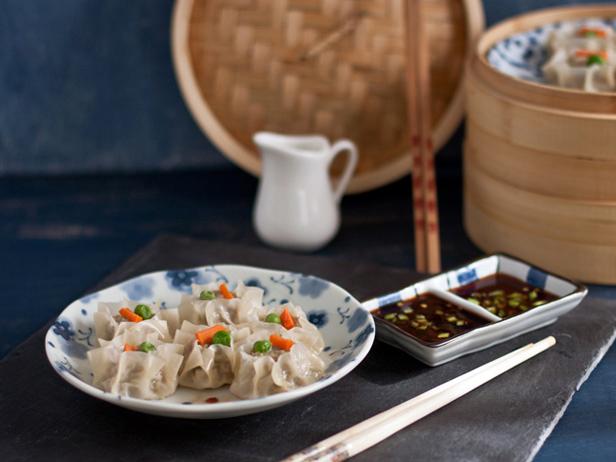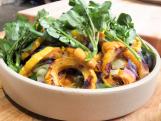Dumplings Recipe for Chinese New Year

Photo by Kankana SaxenaIt is common knowledge that dumplings are considered to be lucky and are eaten for the Chinese New Year (lunar calendar), usually celebrated in February. But have you ever wondered why? “My mother is from Hong Kong,” says home cook Andrew Schrage, co-owner of MoneyCrashers.com, a financial fitness blog, “so I have always been very superstitious and cognizant of Chinese traditions. I’ve heard that the shape of dumplings resembles the gold coins of ancient China, symbolizing prosperity.”
Schrage says making dumplings was serious business in his family when he was growing up, and for the longest time only his mother was allowed to do it. “It was only after a lot of practice that my older brother or I would be allowed to help prepare the dumplings for our New Year’s meal. It was almost a rite of passage,” he says. Though it is traditional to make dumplings for New Year’s celebrations, Schrage enjoys eating them so much that now he makes them year-round.
Chef Chris Yeo serves a delicate array of dim sum at his restaurant Sino in San Jose, California, and says, “Dim sum, a type of dumpling, means ‘a little something from the heart’ and symbolizes fortune and good luck. They are small and shaped like coins, further emphasizing the good luck symbol.” He adds that dumplings resemble the ingots that once were China's currency, so eating them brings hope of an auspicious and fortunate year. Some cooks stuff a lump of sugar in a dumpling to ensure sweetness! And there is even a tradition of hiding a coin in a dumpling now and then. “If you don't break a tooth [when you eat the coin-filled dumpling], you are considered lucky for the year,” says Yeo.
Recipe by Farina Kingsley, author of several Asian cookbooks, and creator of the new Farina's Asian Pantry cooking app for iPhone/iPad.
For the dumplings: Place the minced cabbage and 1 teaspoon of the salt in a large bowl. Mix well and let the salt leach the cabbage of water for 20 minutes.
Meanwhile, make the dipping sauce by whisking together all the ingredients in a small bowl. Set aside until ready to serve.
For the filling, combine the pork, water chestnuts, green onions, ginger, garlic, soy sauce, rice wine, sesame oil, sugar, pepper, cornstarch, and the remaining 1/2 teaspoon salt in a large bowl and mix well.
Use your hands to squeeze the water out of the minced cabbage. Discard the water and mix the dry cabbage with the pork until well combined. Chill until ready to make the dumplings.
Sprinkle a baking sheet lightly with cornstarch. To form the dumplings, place a wrapper in your palm and brush water along the edge. Spoon a heaping tablespoon of filling in the center of the wrapper. Gather up the edges to form a basket. This is a dumpling that is open at the top.
Place the dumpling on the baking sheet, making sure to flatten the bottom of the dumpling so it sits upright. Press any excess filling down into the dumpling and press a piece of carrot and a pea in the filling to secure. Repeat with the remaining filling and wrappers. (You may have wrappers left over.)
Bring a large pan or wok filled with 2 inches of water to a boil over high heat. Place a steaming rack in the wok. Line 2 plates with a single layer of cabbage leaves. Place 8 to 10 dumplings on each plate, leaving plenty of space between them. Set one plate of dumplings on the steaming rack, cover the pan with a lid and steam the dumplings for 10 minutes. Transfer the steamed dumplings to a warmed platter and serve them right away with the dipping sauce. Repeat with the remaining dumplings.
Monica Bhide is the author of “Modern Spice” (Simon & Schuster, 2009).












